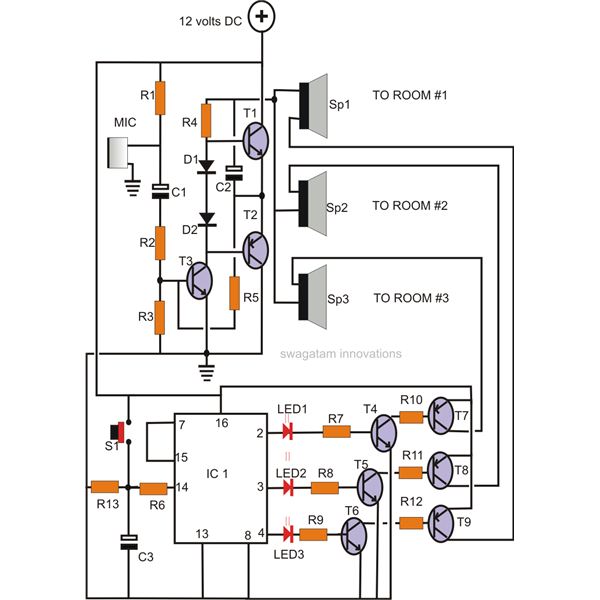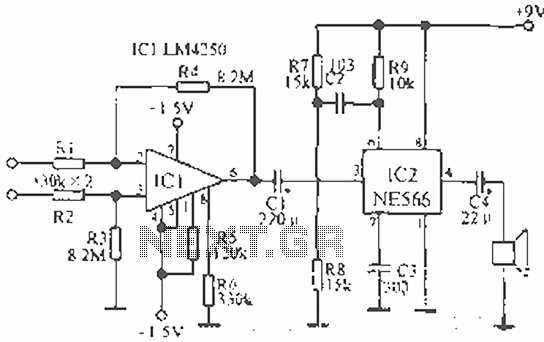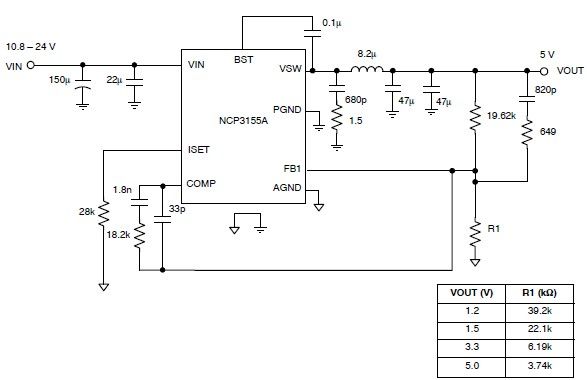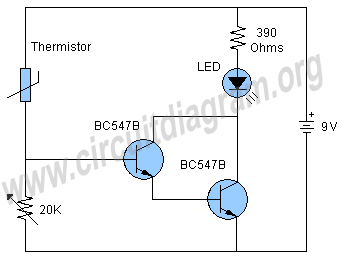
CF8865 module using dedicated switching power supply circuit diagram
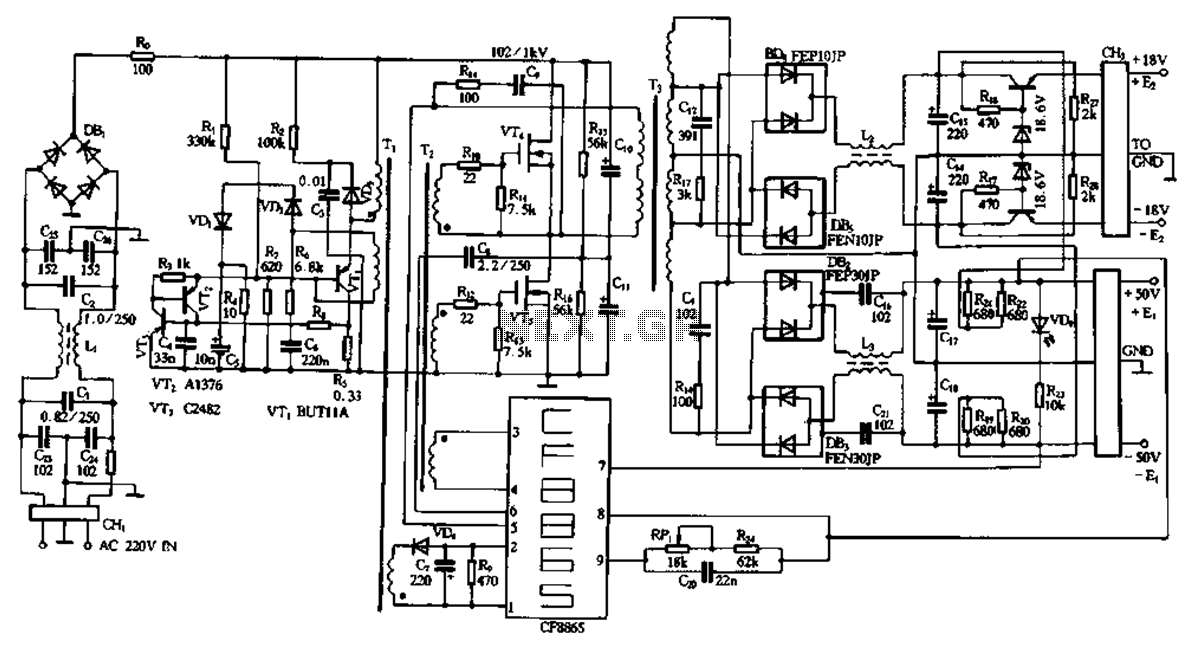
This document describes a specific module utilizing the CF8865 switching power supply circuit, which employs the integrated control module CF8865. In the figure, transistors VT4 and VTs are controlled by the excitation transformer Tz. The output is processed through a pulse transformer T3, followed by a bridge rectifier and voltage regulator. The filtered output provides two symmetrical DC power supplies: one group at 18V and another at 50V. The CF8865 generates an oscillation pulse of 120kHz from the output pins 3 and 4, which drives the excitation transformer T and activates the switches VT4 and VTs. The output voltage can be adjusted via a potentiometer connected to pin 9 of the CF8865, allowing for changes in the output voltage value. Pins 1 and 2 are used for sampling the mains input voltage fluctuations. In addition to generating the excitation pulse to drive the output transformer Tz and control VT4 and VTs, pins 3 and 4 also influence the operation of another winding, vrl. When the mains voltage fluctuates, the 300V DC voltage at the rectifier output will also fluctuate, causing the amplitude of the pulses across the primary winding Ti to vary. This fluctuation is coupled to the secondary side through VD4, generating a negative voltage amplitude. The potential difference between pins 2 and 1 is then detected by an internal NIE circuit, which adjusts the pulse width output at pins 3 and 4. This regulation ultimately stabilizes the output voltage against mains fluctuations.
The CF8865 switching power supply circuit is designed for high efficiency and reliability in power conversion applications. It operates at a frequency of 120kHz, which allows for smaller transformer and filter components, enhancing the overall compactness of the design. The excitation transformer Tz plays a critical role in controlling the operation of the output transistors VT4 and VTs, ensuring that they switch on and off appropriately to maintain the desired output voltage levels.
The circuit's feedback mechanism is crucial for maintaining voltage stability. The voltage sampling at pins 1 and 2 allows the CF8865 to monitor the mains input fluctuations and respond accordingly. This feedback loop ensures that any variations in the input voltage are compensated for by adjusting the pulse width modulation (PWM) at the output, thus maintaining a steady output voltage.
The use of a bridge rectifier following the pulse transformer ensures that the AC output is efficiently converted to DC. The voltage regulator then smooths the output, providing stable DC power supplies of 18V and 50V, which can be utilized for various electronic applications. The symmetrical nature of the output makes the circuit suitable for powering devices that require dual voltage supplies.
In summary, the CF8865 switching power supply circuit is a sophisticated design that combines advanced control mechanisms with efficient power conversion techniques. Its ability to adapt to input voltage fluctuations while providing stable output voltages makes it an ideal choice for modern electronic systems that demand reliability and performance.Described here is a specific module using CF8865 switching power supply circuit, because this circuit is the use of integrated control module CF8865 specific modules. In the fi gure, VT4, VTs is controlled by the excitation transformer Tz job switch, its output down by a pulse transformer T3, followed by stage output voltage bridge rectifier and regulator, the filtered output of plus or minus two symmetrical DC power supply, which is a group of 18V, another group of 50V. CF8865 can produce oscillation pulse 120kHz from 3,4 pin output module through the excitation transformer T and push the switch VT4, VTs work.
CF8865 9-pin output voltage adjustment ends, RPi to adjust potentiometer, adjust Wei, you can change the output voltage value of 08 feet for the output voltage error sample input voltage. l, 2 feet for the mains input voltage fluctuation sampling control input, since CF8865 3.4 foot addition to the excitation pulse to promote the output transformer Tz VT4, VTs turned off, but also to promote the vrl turned off by another winding.
When the mains voltage fluctuations, 300V DC voltage rectifier output will fluctuate, so that by the VTi is turned off amplitude pulses across the primary winding Ti formed will fluctuate after it is coupled to the secondary station via VD4 rectifying generated negative voltage amplitude will be crossing the move, and the potential difference between the change in 2,1 feet, after an internal NIE circuit detection to control the output of 3,4 feet pushing pulse width, and ultimately mains fluctuations caused by fluctuations in the output voltage will be regulated to control.
The CF8865 switching power supply circuit is designed for high efficiency and reliability in power conversion applications. It operates at a frequency of 120kHz, which allows for smaller transformer and filter components, enhancing the overall compactness of the design. The excitation transformer Tz plays a critical role in controlling the operation of the output transistors VT4 and VTs, ensuring that they switch on and off appropriately to maintain the desired output voltage levels.
The circuit's feedback mechanism is crucial for maintaining voltage stability. The voltage sampling at pins 1 and 2 allows the CF8865 to monitor the mains input fluctuations and respond accordingly. This feedback loop ensures that any variations in the input voltage are compensated for by adjusting the pulse width modulation (PWM) at the output, thus maintaining a steady output voltage.
The use of a bridge rectifier following the pulse transformer ensures that the AC output is efficiently converted to DC. The voltage regulator then smooths the output, providing stable DC power supplies of 18V and 50V, which can be utilized for various electronic applications. The symmetrical nature of the output makes the circuit suitable for powering devices that require dual voltage supplies.
In summary, the CF8865 switching power supply circuit is a sophisticated design that combines advanced control mechanisms with efficient power conversion techniques. Its ability to adapt to input voltage fluctuations while providing stable output voltages makes it an ideal choice for modern electronic systems that demand reliability and performance.Described here is a specific module using CF8865 switching power supply circuit, because this circuit is the use of integrated control module CF8865 specific modules. In the fi gure, VT4, VTs is controlled by the excitation transformer Tz job switch, its output down by a pulse transformer T3, followed by stage output voltage bridge rectifier and regulator, the filtered output of plus or minus two symmetrical DC power supply, which is a group of 18V, another group of 50V. CF8865 can produce oscillation pulse 120kHz from 3,4 pin output module through the excitation transformer T and push the switch VT4, VTs work.
CF8865 9-pin output voltage adjustment ends, RPi to adjust potentiometer, adjust Wei, you can change the output voltage value of 08 feet for the output voltage error sample input voltage. l, 2 feet for the mains input voltage fluctuation sampling control input, since CF8865 3.4 foot addition to the excitation pulse to promote the output transformer Tz VT4, VTs turned off, but also to promote the vrl turned off by another winding.
When the mains voltage fluctuations, 300V DC voltage rectifier output will fluctuate, so that by the VTi is turned off amplitude pulses across the primary winding Ti formed will fluctuate after it is coupled to the secondary station via VD4 rectifying generated negative voltage amplitude will be crossing the move, and the potential difference between the change in 2,1 feet, after an internal NIE circuit detection to control the output of 3,4 feet pushing pulse width, and ultimately mains fluctuations caused by fluctuations in the output voltage will be regulated to control.
